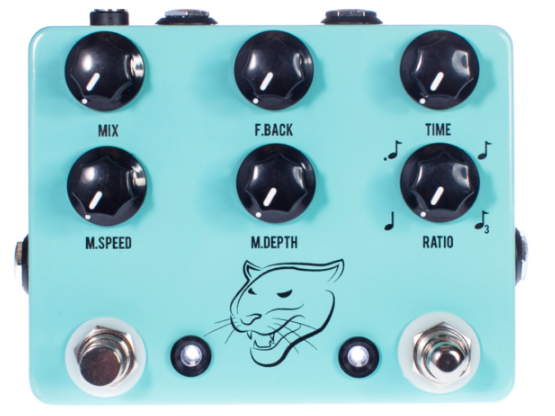Products Category
- FM Transmitter
- 0-50w 50w-1000w 2kw-10kw 10kw+
- TV Transmitter
- 0-50w 50-1kw 2kw-10kw
- FM Antenna
- TV Antenna
- Antenna Accessory
- Cable Connector Power Splitter Dummy Load
- RF Transistor
- Power Supply
- Audio Equipments
- DTV Front End Equipment
- Link System
- STL system Microwave Link system
- FM Radio
- Power Meter
- Other Products
- Special for Coronavirus
Products Tags
Fmuser Sites
- es.fmuser.net
- it.fmuser.net
- fr.fmuser.net
- de.fmuser.net
- af.fmuser.net ->Afrikaans
- sq.fmuser.net ->Albanian
- ar.fmuser.net ->Arabic
- hy.fmuser.net ->Armenian
- az.fmuser.net ->Azerbaijani
- eu.fmuser.net ->Basque
- be.fmuser.net ->Belarusian
- bg.fmuser.net ->Bulgarian
- ca.fmuser.net ->Catalan
- zh-CN.fmuser.net ->Chinese (Simplified)
- zh-TW.fmuser.net ->Chinese (Traditional)
- hr.fmuser.net ->Croatian
- cs.fmuser.net ->Czech
- da.fmuser.net ->Danish
- nl.fmuser.net ->Dutch
- et.fmuser.net ->Estonian
- tl.fmuser.net ->Filipino
- fi.fmuser.net ->Finnish
- fr.fmuser.net ->French
- gl.fmuser.net ->Galician
- ka.fmuser.net ->Georgian
- de.fmuser.net ->German
- el.fmuser.net ->Greek
- ht.fmuser.net ->Haitian Creole
- iw.fmuser.net ->Hebrew
- hi.fmuser.net ->Hindi
- hu.fmuser.net ->Hungarian
- is.fmuser.net ->Icelandic
- id.fmuser.net ->Indonesian
- ga.fmuser.net ->Irish
- it.fmuser.net ->Italian
- ja.fmuser.net ->Japanese
- ko.fmuser.net ->Korean
- lv.fmuser.net ->Latvian
- lt.fmuser.net ->Lithuanian
- mk.fmuser.net ->Macedonian
- ms.fmuser.net ->Malay
- mt.fmuser.net ->Maltese
- no.fmuser.net ->Norwegian
- fa.fmuser.net ->Persian
- pl.fmuser.net ->Polish
- pt.fmuser.net ->Portuguese
- ro.fmuser.net ->Romanian
- ru.fmuser.net ->Russian
- sr.fmuser.net ->Serbian
- sk.fmuser.net ->Slovak
- sl.fmuser.net ->Slovenian
- es.fmuser.net ->Spanish
- sw.fmuser.net ->Swahili
- sv.fmuser.net ->Swedish
- th.fmuser.net ->Thai
- tr.fmuser.net ->Turkish
- uk.fmuser.net ->Ukrainian
- ur.fmuser.net ->Urdu
- vi.fmuser.net ->Vietnamese
- cy.fmuser.net ->Welsh
- yi.fmuser.net ->Yiddish
How To Get the Most From Your Delay Pedal – Part 2
Date:2020/3/7 11:49:10 Hits:

In How to Get the Most from Your Delay Pedal: Part 1, I gave some examples of different delay uses, and here in Part 2, I’ll offer more. These sounds will work great in mono or stereo, with a single delay pedal; try these with your rig.
The Edge
U2’s guitarist has created a sound and style that is instantly recognizable and the main component of that is delay. It’s a crisp, digital-delay sound that closely mirrors the original guitar sound in tone and volume. Rhythmically, the delay is set to a dotted-eighth note and typically three or four repeats are audible. The Edge’s choice of delay is the Korg SDD-3000 and he is partially responsible for the new version of this classic, now in a pedal format with lots of updates.
You can use tap tempo to achieve this rhythmic subdivision by finding the tempo of the song and tapping every third sixteenth note. However, your ability to tap has to be impeccable or you’ll have a mess. If that seems too cumbersome, the Wampler Faux Tape Echo V2 has a rhythmic subdivision knob that will let you choose quarter, eighth, dotted eighth, or triplet note values for the delays.
Cathedral
Eddie Van Halen used the same dotted-eighth rhythmic subdivision in the song “Cathedral.” He used a single repeat, hammered each note with his left hand, and used his right hand to quickly swell into each note with the guitar’s volume knob. With this setting, playing a steady stream of eighth notes will give you sixteenth notes. Since the delay is repeating every other note, you get groups of three. Eddie was playing arpeggios and the repeated note made it sound like he was doing a lot more.
Country-guitarist Albert Lee used that same setting but picked each note. He also set the volume of the delay equal to the guitar. With every eighth note you play changing pitches, climbing a scale for example, it sounds like you’re playing twice as many notes!
Dynamic Delay
This is the sound of the delay level dropping while you are picking notes and when a note is held or when there is silence, the delay level rises behind the guitar. This is very dramatic and excellent for solos with space in the phrases. If your song arrangement has pauses, filling that pause with a delay swell is a nice touch. This sound is most effective with louder delay levels and multiple repeats so that when the delay volume does rise, it’s obvious. The TC Electronic Flashback has a Dynamic setting and the Eventide Time Factor has a setting called Ducked Delay.
You can also do this manually by connecting an expression pedal to the delay and assigning it to the delay level. That way, you have control over when and how much delay is audible. The Time Factor and the Boss RE-20 Space Echo are examples of delays with an expression pedal input.
Huge Swells
This is basically creating space and atmosphere with ambience. Swelling notes or chords with your volume knob or a volume pedal into a mountain of delay and reverb can make the guitar sound like another instrument. If you add any other color such as chorus, phase, flange, pitch shift, etc., the resulting sound will be even less guitar-like. Compression will help the note sustain as will a smooth, dark fuzz sound. Gliss notes with a slide or whammy bar and you’re in your own sonic terrain.
Make sure that the delay level is at least as loud as the original signal. Use a larger reverb space, such as a Hall, and match the level of it with the delay level. Also match the number of delay repeats with the length of the reverb.
I hope you had as much fun with these delay sounds as I did. More importantly, I hope it sparked your creativity. Of course, these sounds are just suggestions and a place to start. As always, your ears are your best guide to good sounds.
Leave a message
Message List
Comments Loading...





